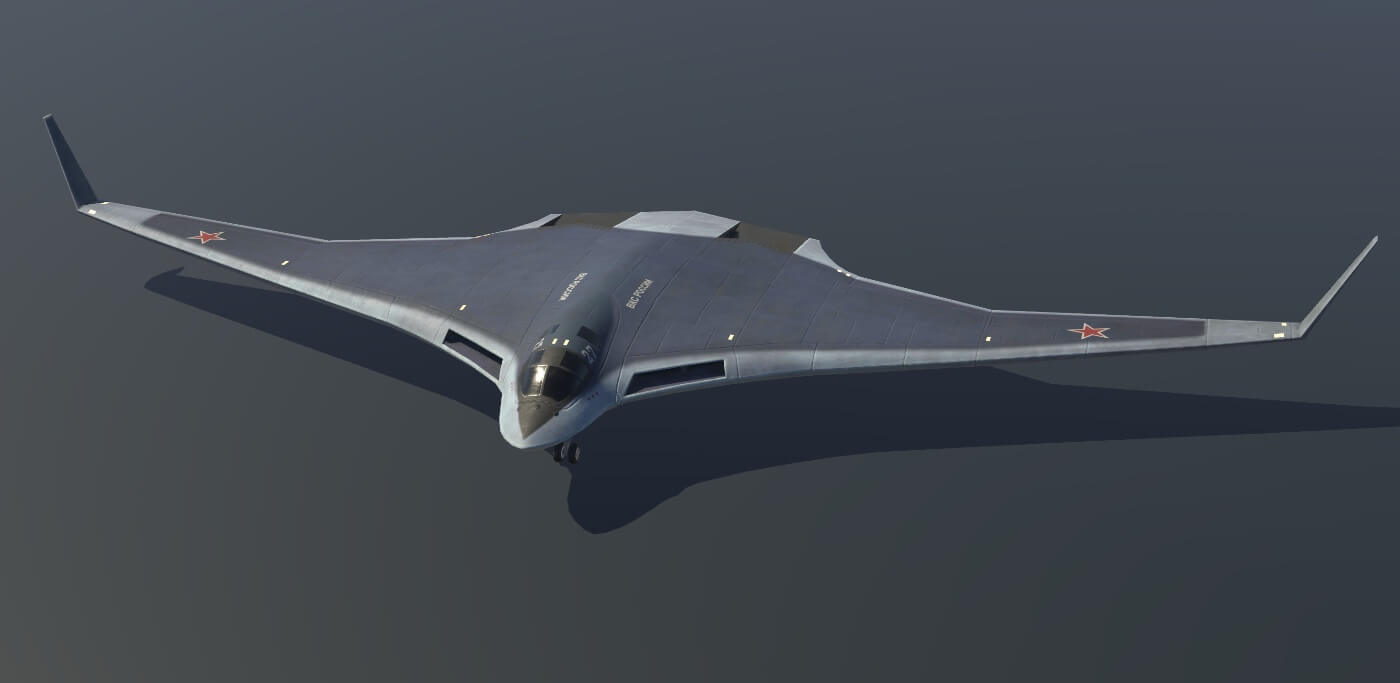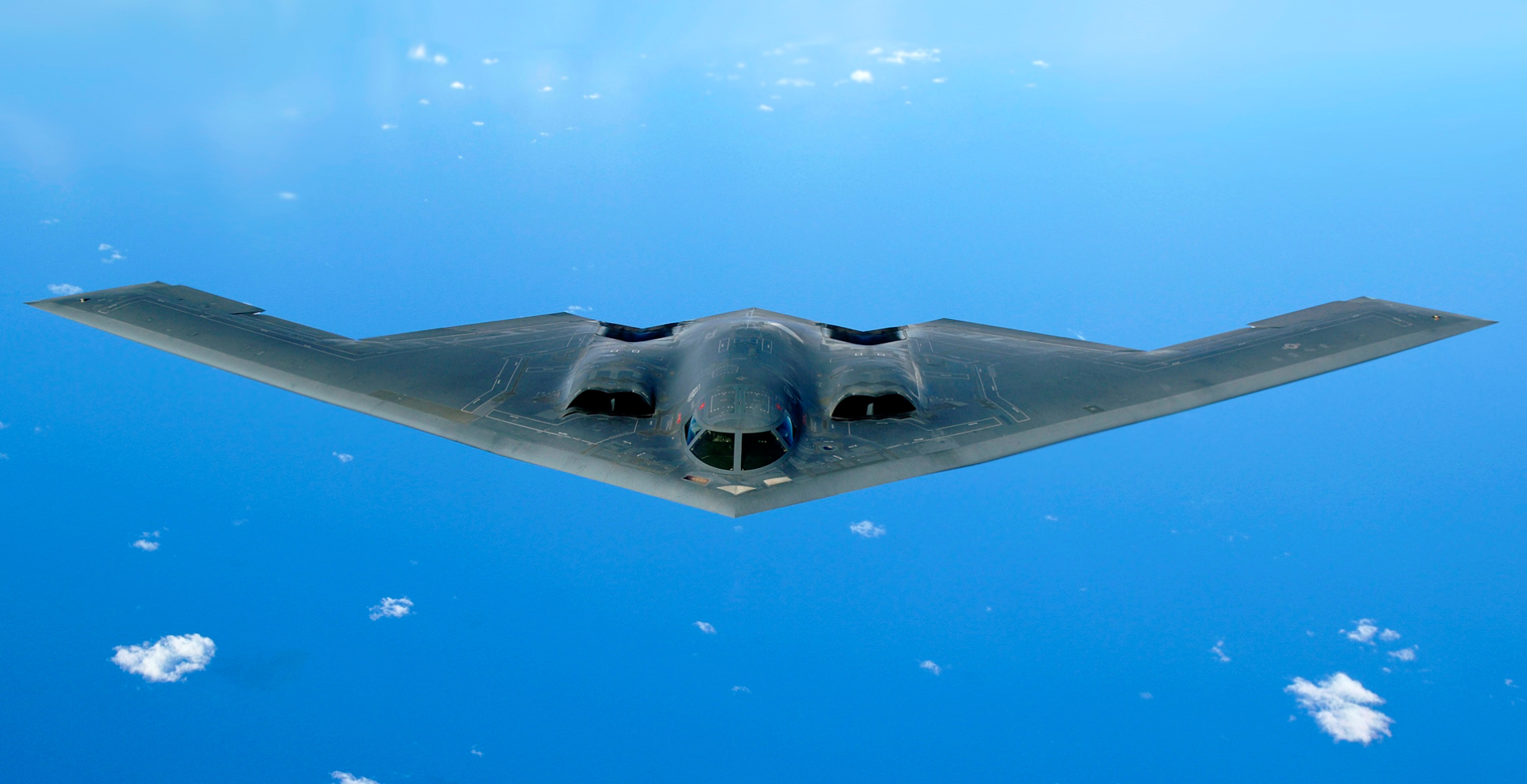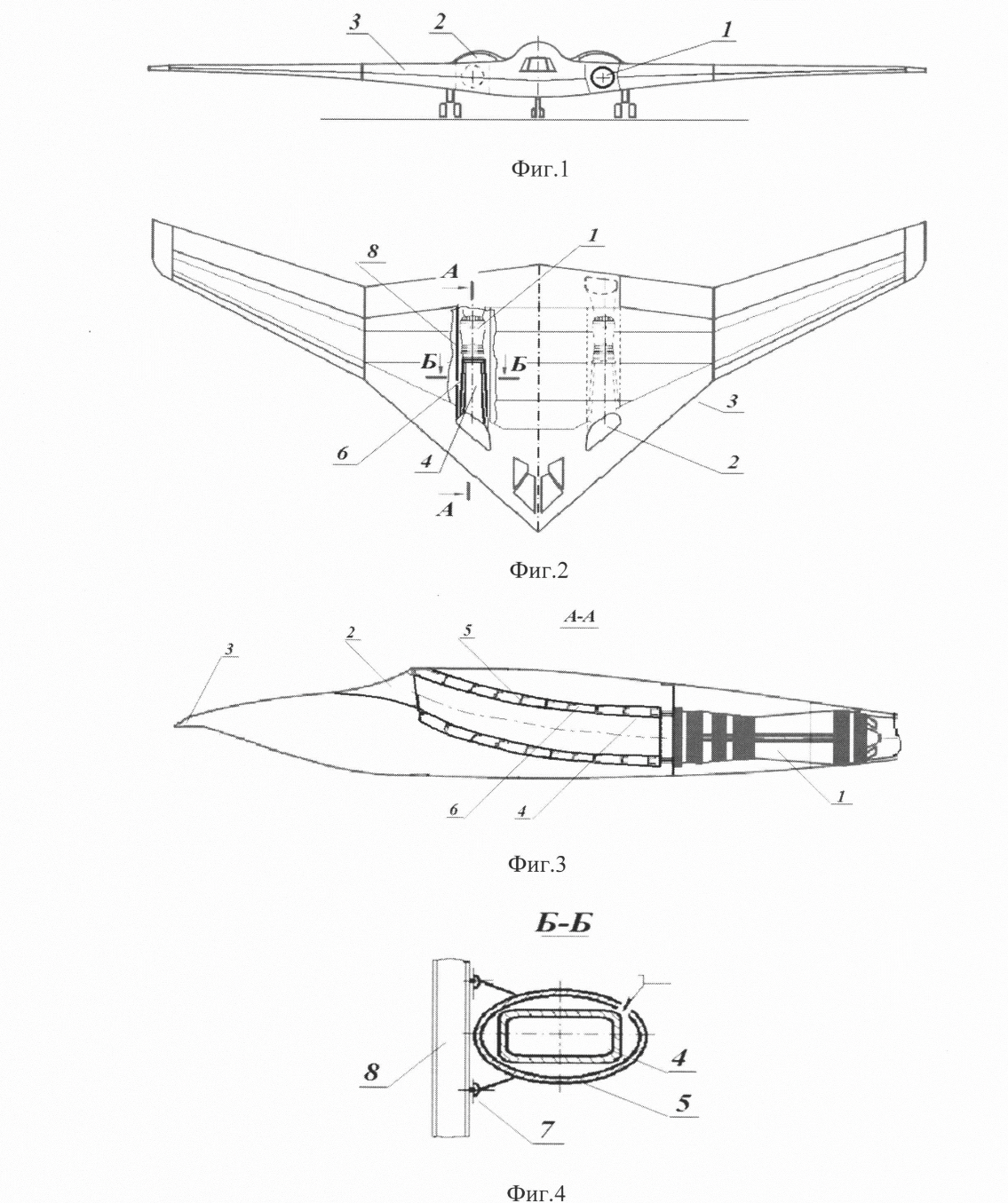Russia has reportedly started the construction of its long-in-development stealth bomber to replace the current fleet. A patent drawing for an engine uptake duct recently emerged, which is believed to be the preliminary design of Russia’s first-ever stealth bomber, the Tupolev PAK DA.
The drawings come from a patent that Tupolev was awarded earlier this year that covers specifics of an aircraft engine inlet.
The front, top, and side views of the intake could be seen clearly in the design drawings. Even though the pictured jet is not described as the PAK DA bomber, it is almost consistent with semi-official and unofficial claims of the bomber’s general design.
Since 2007, work has been underway on the long-range subsonic bomber, ultimately intended to replace the Tupolev Tu-95MS Bear-H and Tu-160 Blackjack.
However, despite widespread reports of a flying wing design, no official models or artworks have been confirmed. Currently, the T-90 and T-160 bombers are being used by Russia to fire cruise missiles on Ukraine.
Earlier, a Russian aircraft building industry source told the Russian news agency TASS that a demonstration model of the PAK DA long-range bomber aircraft is expected to be put together by 2023. The Russian officials are hopeful of a first flight by 2035.
In addition, Russia’s deputy defense minister Alexey Krivoruchko stated in an interview in December 2019 that the PAK DA design project had been approved and that the Tupolev design bureau had started creating functional design documentation. None of it has been released in the public domain yet.
In contrast with Russia’s lagging low-observable bomber program, the US B-21 Raider stealth bomber will finally be revealed to the public later this year.

Even the American bomber remains shrouded in mystery ever since its inception. Nevertheless, unlike the Russians, the US Air Force released a rendering of the B-21 last year.
A Stealthy Bomber But Not Very Stealthy
The flying-wing design is vaguely similar to the B-2 Spirit used by the United States Air Force. A flying wing is a tailless fixed-wing aircraft with crew, payload, fuel, and equipment incorporated inside the primary wing structure and no distinct fuselage.
The patent drawing indicates that the Russian bomber has the same pointed “beak,” forward-set cockpit, and engine intakes on either side of the upper portions of the wing/body.
It is speculated that all future bombers, including the PAK DA, the B-21 Raider, and the Chinese H-20, would have the flying wing design based on the B-2 Spirit.

The probable PAK DA design shows an aircraft with a similarly inclined nose but a prominently cranked wing, in contrast to the Spirit, which is effectively a 35-degree angle flying wing/fuselage with a “serrated” trailing edge. Because of this, the wings’ narrower outboard parts have far less extreme angles of a sweep.
The patent sketch has a pronounced kinked wing that may not be present in the final PAK DA. In a recent article for Aviation Week, Russian aviation expert Piotr Butowski asserts that the final aircraft will probably have a constant leading-edge angle, similar to the B-2 and probably also the B-21 Raider.
Such modification would result in a configuration closer to the B-21’s official representations.

The trailing edge of the apparent Russian bomber is much more straightforward than the B-2’s, resembling cranked-kite designs like the X-47B drone and the Russian S-70 Okhotnik, albeit with smaller angles of a sweep, noted The War Zone.
Furthermore, it resembles only very loosely the B-21 Raider of the United States Air Force in terms of simplicity.
From the design, it could be seen that the aircraft’s two engines are buried in the wing/body. Although a twin-engine design for the PAK DA was always anticipated, the artwork shows that the engine exhausts merely exit the trailing edge, with no indication of a more unusual platypus or shelf-type exhaust design.
Just for comparison, not in scale…
Some elements *might* suggest potential for a higher maximum speed…#PAKDA #aviationlovers #aviation pic.twitter.com/7FEwWKaUjP
— 乙 JnAndris 乙 (@JohnAndris) August 1, 2022
So far, only the US, China, and Russia have indigenously developed a stealth aircraft program and put it into action. However, it is widely believed that Russian stealth technology lags behind that of its American and Chinese counterparts.
The Sukhoi Su-57, the only operational stealth fighter in the country, is probably the least stealthy fifth-generation fighter currently in use, and the PAK DA’s prospects aren’t much better.
The patent drawing generally depicts a bomber that does not fall within the category of very low observable (VLO) but has some consideration for a degree of low observability (LO).
Further, the design does not show angle alignment, and other stealth elements cannot be made out from the design alone. And in any case, there is little information about this bomber in the public domain.
What Do We Know About PAK DA?
It is anticipated that the PAK DA will not have the supersonic capability. The Russian bomber will continue to fly at subsonic speeds instead, depending on its low visibility to avoid hostile interference.
It is expected to have a range of 15,000 kilometers (9,300 miles) and the capability to continuously remain in the air for up to 30 hours.
The PAK DA will likely transport a substantial payload of conventional or nuclear munitions with four crew members.
According to several reports, the PAK-DA will be able to carry more than 30 tons of payload in total. The PAK DA’s engines are expected to be derived from the NK-32-02 used in the Tu-160M.
New-generation standoff missiles on a pair of rotary launchers housed in interior weapon bays are among the anticipated weaponry. Twelve new Kh-BD long-range subsonic cruise missiles, which are meant to have a more extended range than the Kh-101/102 already in use, are most likely to make up the main basic load.
Regardless of the connection between the patent’s aircraft design and the finalized PAK DA configuration, this seems to be the latest development in the enigmatic plane’s narrative, which is intended to replace Russia’s current manned bomber fleet. To date, this program has been dogged by delays and limited funding.
Crippling sanctions imposed on Russia’s defense industry and its contracting economy in the face of invasion could either delay the program or boost it.
Currently, there is an initial picture, and the popular vote is that the Russian design has eerie similarities with American bombers but might not be stealthy enough.
- contact the author at sakshi.tiwari9555@gmail.com
- Follow EurAsian Times on Google News




